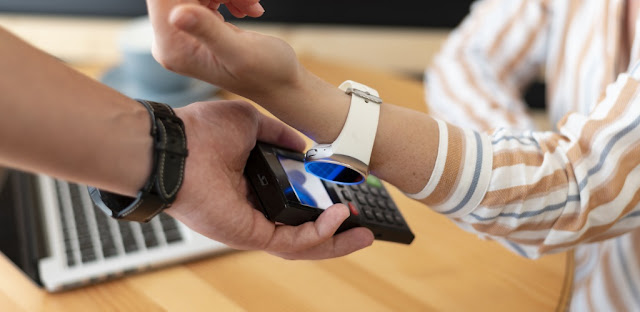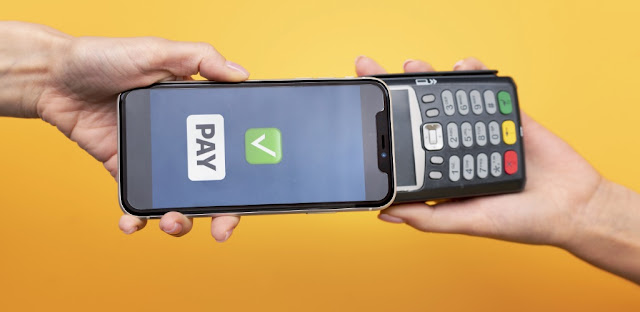Digital payment providers realise massive success due to mass digital payments and exponential use of online wallets for money transfers, post-pandemic. These digital payments became a hit among the users because -
• First and foremost, effective mobile/digital payment services often have a well-defined ecosystem of merchants and customers, allowing widespread adoption of the payment proposal.
• Second, they are retailer centric propositions.
• Third, the payment is usually integrated as a seamless element of the end-to-end transaction, resulting in a frictionless user experience.
Digital payments will rise at a CAGR of 19.4% between 2021 and 2028, with businesses like Apple, Venmo, and Square leading the charge. These factors include the surge in e-commerce sales and an explosion in Internet activity throughout the world. Even banks are jumping on the bandwagon. For example, 80% of central banks examined by the Bank for International Settlements are involved in a digital currency programme, including corporate and private use cases.
Contactless Payments revolutionising the adoption of digital payments
In certain areas, contactless transactions are increasing at a pace of up to 300% each year. In the first quarter of 2013, Visa recorded a 46% increase in contactless transactions in Europe. The UK, Poland, and Spain led the way. It's a minimal behavioural shift for customers to switch from contactless cards to mobile NFC, given PoS readers are already in place.
Contactless cards may be used for NFC transactions (or other contactless technologies such as QR codes or bar codes). New customer expectations and behaviours are being driven away from cash and toward electronic interactions with merchants due to contactless usage.
There are several advantages to using digital payments.
- Safety
It is more secure to use digital payment methods. Rather than a single card number, each transaction is restricted to the amount preapproved by the cardholder. It's essential to keep an eye on things. Instead of handing out physical cards, digital technology enables you to restrict payment methods to those pre approved.
- The ability to be seen
Finance departments benefit from having more apparent audit trails and more accurate data when using different credit card numbers for each transaction. Wait until the end of the month to see how much money is spent or saved.
- There is less workload.
Finance teams that have embraced some software are typically forced to manually send purchase orders, sort through paper receipts and mail checks — not to mention manually reconcile all of this paper activity into accounting systems. Automated payment technology eliminates manual labour by consolidating the whole process into a single automated workflow and smoothly delivering the data to the general ledger.
- Efficacy
Employees may use their mobile wallets to pay for items on the move, with the option to utilise a virtual or actual credit card if required.
Some popular e-wallet services in the USA
If you're a Starbucks customer, you're likely to use their smartphone app. PayPal, a Digital payment provider, has also been an enormous success. Its development has been encouraged by eBay's widespread use of the service. One example of an ecosystem of payment is the Hailo app, which has an automatic yet user-verifiable payment feature for finding and reserving taxis.
Future of online wallet for money transfer
In the future, plastic cards will be kept in digital wallets and merchant applications, allowing customers to purchase online or on their mobile devices while securing their personal information. Dematerialised cards will be there for a long time to come. Still, they will be challenged by the strong adoption of payments made directly from bank accounts and the growing usage of other payment methods. Payment mechanisms will be incorporated in banking applications, retail apps, and even equipment like power metres and autos (for pay-as-you-go insurance).
In the future, digital wallets in the USA will appear significantly different from the ones now on the market, where few have had much success. Instead, goods that enable all elements of value transfer in e-commerce (payments, identification and so on) will grow into products equipped with algorithms that can optimize payment choices and loyalty rewards, as well as price reductions from coupon and offer offerings.
As payment becomes more of a background operation in a more significant transaction, there will be a tendency to "put it on the tab." more widely. On the other hand, real-time payments will aid in the creation of new business models. Payment innovations will become commonplace in digital ecosystems, which are now in the early stages of development. Interoperable solutions that link all customers and merchants throughout the sector will be driven by larger ecosystems, such as banking.
These changes will also impact how banks offer account holders payment services. There is a new realm of intermediation instead of banks dealing directly with customers for payments as they presently do for online banking, check and card payments. As a result, digital ecosystems will flourish, and this domain will be located between customers and banks.
Take a Digital Approach to All Purchases
Digital wallet solution is simply a digital payment made digitally, at least on the surface. However, as far as virtual credit cards and digital wallets are concerned, more is at stake. There is more to adopting a digital strategy than merely digitising an old one. It implies offering an end-to-end linked experience that includes payment, coding, and receipt collection for online and in-person transactions made by workers.
A return to the workplace and even business travel is expected in a matter of months, and actual payments will once again be required. In other words, this does not imply that you may go back to your old ways of spending money. However, when it comes to buying, we've discovered that the conventional processes are no longer relevant in today's connected world.
A more comprehensive strategy would be to give a seamless digital experience for all purchases. To meet the demands of today's finance departments, this will allow all workers to make purchases promptly and without hassle.
Conclusion
Digital payments are becoming more popular, but cash is still the preferred payment method for many people, particularly in low-value transactions and for specific demographic groups. Speed, universal acceptability, anonymity, and the absence of fees are just a few of the benefits of using cash. However, a lack of modern payment infrastructure in several developing nations and distrust in the contemporary financial system indicate a long way to go before we are really cashless.
About the author:
Pranjal Mehta is a technology strategist and the Founder and Managing Director of Zealous System, which provides innovative and cutting-edge technology models and services to businesses. He has a fierce passion for technology, which is why he is deeply committed to delivering solutions to the key problems faced by Startups as well as Enterprises.
Website Link – www.zealousys.com


